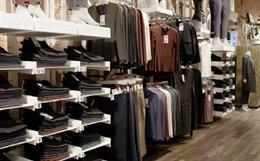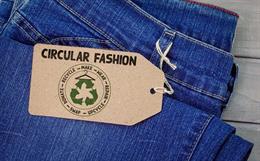A Strategic Perspective of COVID & Post-COVID Reality of Global Fashion Supply Chain
COVID and post-COVID reality in the global fashion supply chain environment can easily be termed VUCA (Volatile, Uncertain, Complex and Ambiguous)—the acronym arguably first used by the United States Army War College after the 9/11 terrorist attacks in 2001. In the world of fashion, we believe a crisis is a creative space. So, the fashion industry tried to solve the supply chain crisis creatively. In this article, the challenges of the global fashion supply chain are to be understood, and later, its creative solutions will be explained.
The fashion supply chain environment in COVID and post-COVID world witnessed tremendous increments in costs. The shipping cost of containers, raw material cost, more specifically the cost of the yarn, port congestions and restricted ship availability, port closures and disruptions like the Suez Canal blockage in 2021, increased geopolitical tensions like the US-China trade war and Russia-Ukraine war, changes in trade agreements like EU proposal on world’s first carbon border tax, import bans from China’s Xinjiang region and new layers of paper works and delays brought by Brexit—all have significantly impacted the free movement of fashion products across the globe.
These challenges questioned the existing pattern of overdependence in the global fashion supply chain. Be it overdependence on China for materials, on Suez Canal for easy transportation, or over-emphasising the neo-liberal economic model that entirely focuses on setting up manufacturing units in the countries with the lowest wages of skilful workers and the countries where environmental rules are more flexible.
Rules of the fashion supply chain are slowly but steadily being changed. One can look into the current strategies and communications of global fashion business houses and their leaders. Let us understand these strategies in the following points.
1. Nearshoring, Reshoring, and Sourcing Country mix: Italy’s Benetton is bringing production closer to home, termed nearshoring, boosting manufacturing in Serbia, Croatia, Turkey, Tunisia, and Egypt to halve the products manufactured in Asia from the end of 2022. New Hugo Boss CEO Daniel Grieder also said they would expand nearshoring considerably in the near future. Apparel companies are focusing on sourcing country mix to reduce uncertainty and bring the right balance between economy, speed, and flexibility. It resulted in opening of several sourcing offices in different countries, decreasing dependence on Hong Kong’s sourcing office.
2. Embracing more Digitalisation and Partnership with Digitally Sophisticated Suppliers: Fashion companies are now embracing holistic digital transformations. Pandemic accelerated the usage of virtual sampling, digitised interfaces, and real-time analytical decision-making. Long-term partnerships are sought from trusted suppliers who invest in digitisation and upscaling. Steve Rendle, the CEO and the Chairman of VF Corporation, has said that he sees significant opportunities in creating a hyper-digital supply chain.
3. Simplifying Assortment: Most companies are planning for a dramatic change in their assortment planning and design decisions, shifting towards reduced product complexity.
4. Repurposing Manufacturing: The fashion industry, from luxury brands to mass brands across the globe, showed the example of repurposing manufacturing to make the ball rolling during the pandemic. They efficiently made sanitisers, masks, PPEs, and many more COVID-related products. In this global macroeconomic environment, the industry cannot afford to forget this skill where climate crisis, geopolitical crisis, wars, and terrorism have become regular features. So, this is also a trend which is going to stay.
5. Thinking Alternatives of Traditional Product Route: After the COVID crises and Suez Canal blockage, companies have started exploring and analysing options like rerouting products around the Cape of Good Hope canal, a combination of sea-air cargo transport solutions, etc after considering the cost, time, and risk involved in those alternatives.
In a Harvard Business Review article, Nate Bennett and James Lemoine argued in this VUCA business environment that rigorous strategic planning is more critical for the organisation. For managing global fashion supply chain challenges, fashion managers need to categorise risk, identify drivers of hazards, and formulate a specific customised strategic plan along with a contingency plan to reduce risks. They always have to consider the trade-offs between risks and costs involved. The days of one size fits all strategies are over in the global fashion supply chain world.





